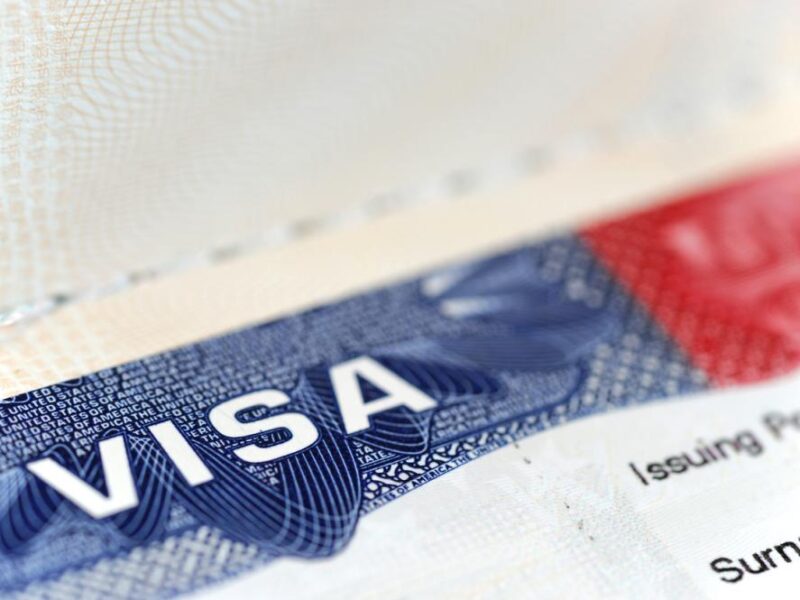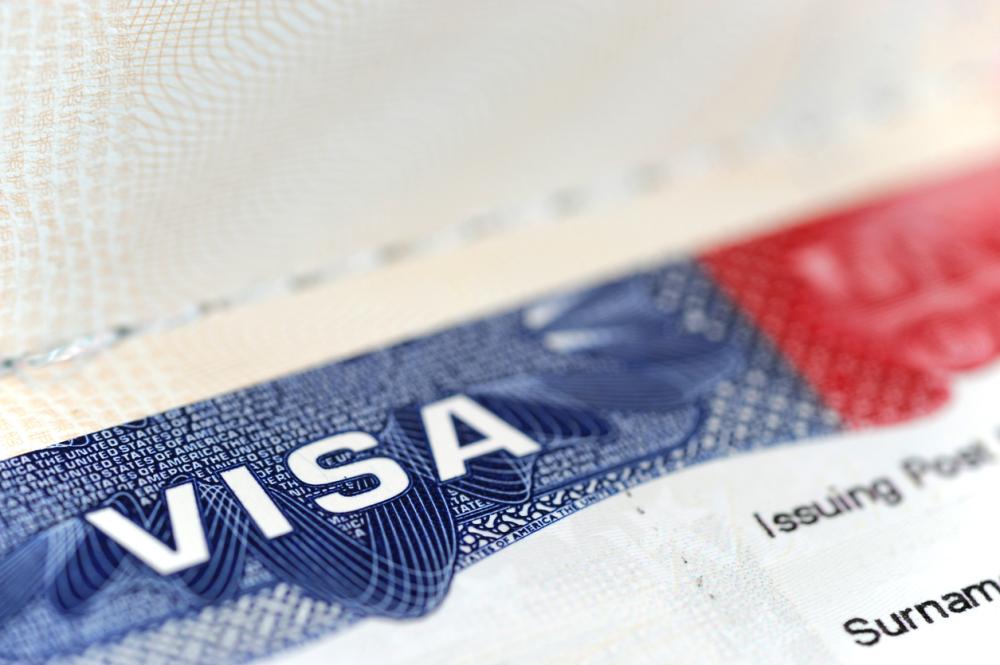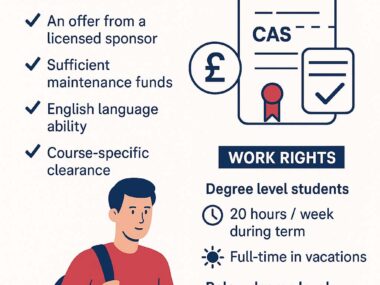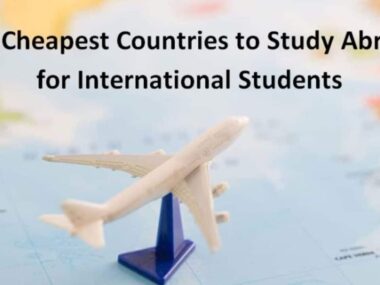Work-Study Visa for USA International Students: A Comprehensive Guide
Introduction
The United States remains one of the most popular destinations for international students seeking world-class education, diverse cultural experiences, and opportunities to grow academically and professionally. While studying in the U.S. is a significant investment, international students can reduce financial strain through various work-study options available under their visa status.
The U.S. offers a structured system that allows international students to work legally while studying under specific visa categories—most commonly the F-1 visa. These work opportunities not only provide financial support but also offer valuable experience in the American job market.
This guide covers everything you need to know about the work-study visa options for international students in the United States, including visa types, eligibility, employment categories, limitations, application processes, and practical tips.
Table of Contents
- Overview of the U.S. Student Visa System
- F-1 Visa: The Primary Work-Study Visa
- J-1 Visa and Work Authorization
- M-1 Visa Restrictions
- Types of Employment Allowed on F-1 Visa
- On-Campus Employment
- Curricular Practical Training (CPT)
- Optional Practical Training (OPT)
- STEM OPT Extension
- Work-Study Programs and Financial Aid
- Eligibility Requirements
- Application Process for Work Authorization
- Income, Taxes, and Social Security
- Restrictions and Violations
- Switching Visa Status After Graduation
- Tips for Finding Student Jobs
- Rights and Responsibilities
- Common Challenges and How to Overcome Them
- Conclusion
1. Overview of the U.S. Student Visa System
The United States hosts over one million international students annually, with the majority entering on the F-1 visa, which is designed for full-time academic study. Depending on their academic objectives, students may apply for:
- F-1 Visa: For academic programs at colleges, universities, and language schools.
- J-1 Visa: For exchange programs and some university-level programs.
- M-1 Visa: For vocational or non-academic training.
Each visa type has distinct rules for employment and financial activity, with the F-1 visa offering the most flexible work-study options.
2. F-1 Visa: The Primary Work-Study Visa
The F-1 visa is the most common non-immigrant visa for international students in the U.S. It allows full-time study at accredited academic institutions and offers the possibility to work under defined conditions.
Key Features:
- Must be enrolled in a full-time course of study.
- Eligible for on-campus work from the first academic term.
- Eligible for off-campus work (CPT/OPT) after meeting certain conditions.
- Must maintain valid visa status throughout the study period.
3. J-1 Visa and Work Authorization
The J-1 visa is intended for exchange visitors and may include students in specific sponsored programs. Work rights are similar to the F-1 but are managed through the program sponsor.
Key Work Options:
- Academic Training (AT): A form of authorized employment related to the field of study.
- Work is arranged and approved by the sponsoring institution.
4. M-1 Visa Restrictions
The M-1 visa is for vocational or technical students and comes with very limited work rights.
- On-campus employment is generally not permitted.
- Off-campus employment is allowed only after completion of studies and only with authorization.
- Total practical training time is capped based on the program length.
5. Types of Employment Allowed on F-1 Visa
International students on the F-1 visa have access to several employment categories:
A. On-Campus Employment
Eligibility:
- Available from the first semester.
- Must be enrolled full-time.
Work Limitations:
- Maximum of 20 hours/week during the semester.
- Full-time (40 hours/week) allowed during official school breaks.
Types of Jobs:
- Library assistant
- Research or teaching assistant
- Dining hall or bookstore staff
Application Process:
- No special work permit required.
- Must get an SSN (Social Security Number) if paid.
B. Curricular Practical Training (CPT)
Definition:
CPT allows students to work off-campus in internships, cooperative education, or any other employment that is part of the curriculum.
Eligibility:
- Must have completed at least one full academic year.
- Must be part of a degree program.
Key Features:
- Must be authorized by the school’s Designated School Official (DSO).
- Employer-specific and date-specific authorization.
- Can be full-time or part-time.
Limitations:
- Using 12 months or more of full-time CPT removes eligibility for OPT.
C. Optional Practical Training (OPT)
Definition:
OPT is temporary employment related to a student’s major field of study.
Eligibility:
- Eligible after completing one full academic year.
- Must apply for OPT through the U.S. Citizenship and Immigration Services (USCIS).
Types:
- Pre-completion OPT: Before completing the program (part-time).
- Post-completion OPT: After graduating (full-time).
Duration:
- Up to 12 months of OPT per educational level.
D. STEM OPT Extension
Eligibility:
- Available to students in science, technology, engineering, and math (STEM) fields.
- Must have completed a degree in an eligible STEM field.
Duration:
- Extension of 24 months beyond regular OPT.
- Total of up to 36 months of work authorization.
Employer Requirements:
- Must be enrolled in the E-Verify program.
- Must provide formal training and mentorship.
6. Work-Study Programs and Financial Aid
Work-study programs in the U.S. are typically funded by the Federal Work-Study (FWS) initiative. However, international students are not eligible for FWS. Instead, international students may receive
- Institutional aid or scholarships.
- Campus employment is funded by the school.
- Graduate assistantships (with tuition waivers and stipends).
These are not considered “federal work-study” but offer similar on-campus opportunities.
7. Eligibility Requirements
To work legally under a student visa, the following must be met:
- Valid F-1/J-1 visa status.
- Full-time enrollment in an SEVP-approved institution.
- Work authorization for CPT, OPT, or AT.
- Job related to the field of study (for CPT/OPT).
- Approval from DSO and/or USCIS when applicable.
APPLY FOR US STUDY VISA
8. Application Process for Work Authorization
On-campus employment:
- Secure a job on campus.
- Get a letter from your employer.
- Obtain an SSN.
- Start working.
CPT:
- Get a job offer relevant to your major.
- Request CPT authorization from DSO.
- Receive a new I-20 with CPT endorsement.
- Start working on the specified date.
OPT:
- Apply to USCIS using Form I-765.
- Wait for the Employment Authorization Document (EAD).
- Begin work after receiving the EAD.
STEM OPT:
- Submit Form I-983 training plan.
- Apply for an extension through USCIS.
- Receive STEM OPT EAD and follow employer reporting requirements.
9. Income, Taxes, and Social Security
International students must comply with U.S. tax laws:
- F-1 students are considered nonresident aliens for tax purposes for the first 5 years.
- Must file Form 8843 (even if not earning income).
- If earning income, file Form 1040NR and state tax forms.
- Social Security and Medicare taxes are generally not required on F-1 employment.
10. Restrictions and Violations
Key Restrictions:
- Do not exceed 20 hours/week during academic sessions.
- Work only in authorized positions.
- Do not start working before receiving authorization.
- Unauthorized employment is a violation and can lead to visa termination.
Consequences of Violations:
- Termination of SEVIS record.
- Possible deportation.
- Ineligibility for future immigration benefits.
11. Switching Visa Status After Graduation
Students completing OPT may:
- Apply for an H-1B work visa (employer sponsorship required).
- Enroll in a higher degree program and extend F-1 status.
- Apply for other visa categories such as O-1 (extraordinary ability) or permanent residency if eligible.
The H-1B visa is the most common next step for those seeking long-term employment.
12. Tips for Finding Student Jobs
- Visit the career services center at your school.
- Use campus job portals or bulletin boards.
- Network with faculty and departments for assistantships.
- Attend career fairs and internship events.
- Customize your resume and prepare for U.S.-style interviews.
13. Rights and Responsibilities
Rights:
- Work legally under authorized programs.
- Receive minimum wage and proper training.
- Be protected by workplace safety laws.
- Seek help from your DSO for compliance.
Responsibilities:
- Follow all employment regulations.
- Maintain full-time student status.
- Report address changes or employment updates to DSO.
- Keep your immigration documents valid and updated.
14. Common Challenges and How to Overcome Them
1. Delays in OPT Processing:
- Apply early (up to 90 days before graduation).
- Monitor USCIS processing timelines.
2. Limited Job Availability:
- Be flexible and open to various roles.
- Consider unpaid internships that offer experience.
3. Employer Hesitancy:
- Some employers are unfamiliar with F-1 regulations.
- Explain the process clearly and offer DSO support.
4. Cultural Adjustment:
- Take workshops or cultural orientation programs.
- Join student groups and international clubs.
Conclusion
The United States provides a rich and structured framework for international students to study and work legally under the F-1 visa. While not eligible for federal work-study, students can access numerous job opportunities on and off campus through CPT and OPT. These experiences not only provide financial support but also build a strong foundation for a career in the U.S. or globally.
Understanding your visa rights and complying with employment regulations is key to maintaining your legal status and making the most of your time in America.
APPLY FOR US STUDY VISA
![]()




